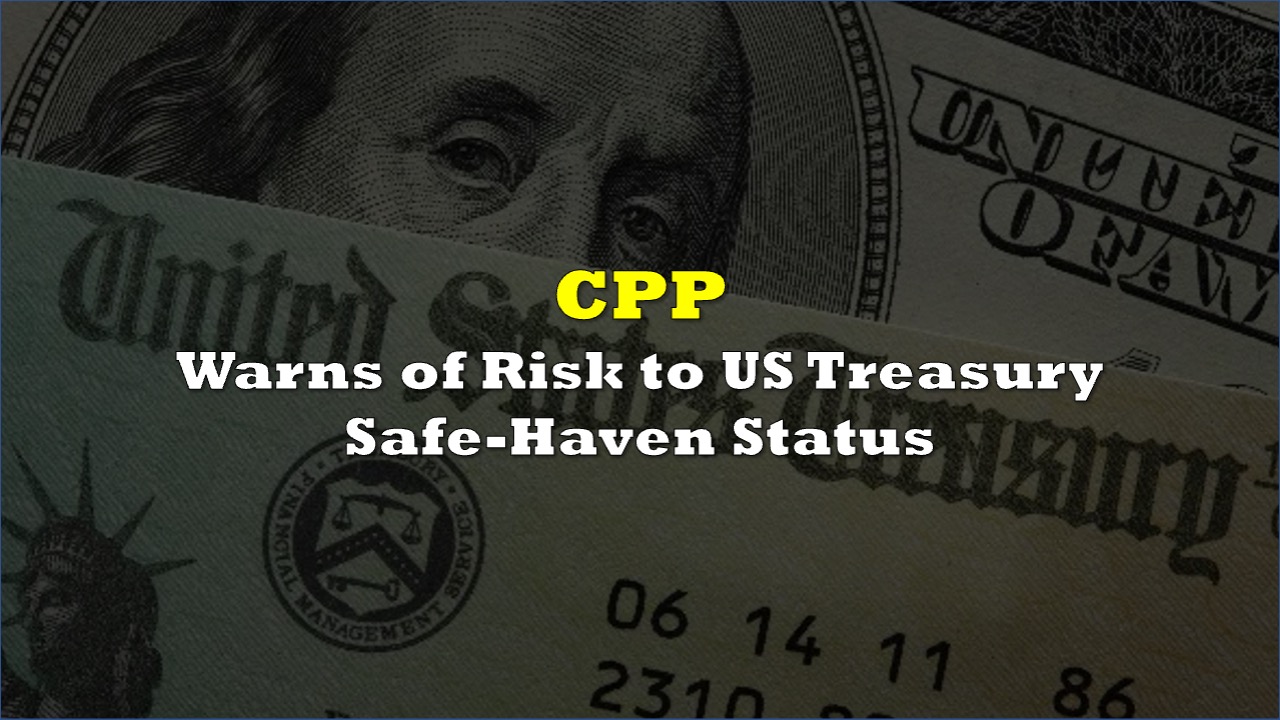US Treasuries risk losing their safe-haven status as fiscal pressures mount, threatening higher borrowing costs across global markets, a top official at Canada’s $732 billion pension fund warns.
Manroop Jhooty, head of total fund management at Canada Pension Plan Investment Board, said the Treasury market risks losing its diversification benefits as bonds increasingly behave like risky assets rather than safe havens. The fund currently holds roughly half of its assets in US securities.
The potential erosion of Treasury safe-haven status carries significant consequences for global markets. If Treasuries lose their premium status, the US government will face higher costs to finance its debt. Treasury rates set the baseline cost of borrowing across financial markets, from corporate debt to home mortgages, meaning elevated Treasury yields would ripple through the entire financial system.
Foreign investors hold approximately $8.5 trillion of the $28 trillion in marketable Treasury debt. Trade policy changes that reduce US trade deficits could diminish foreign dollar reserves available for Treasury purchases, potentially creating a supply-demand imbalance that pushes yields higher.
Institutional investors have relied on Treasuries as a hedge against equity market downturns for decades. If this correlation breaks down, pension funds, insurance companies, and asset managers will need to restructure portfolios, potentially triggering significant asset reallocation.
The warning follows unusual market behavior in April 2025, when Treasuries fell alongside stocks during turmoil triggered by tariff announcements — the opposite of their traditional safe-haven response. Treasury yields posted their largest weekly increase in more than 20 years. Former Treasury Secretary Lawrence Summers compared the moves to emerging-market debt behavior.
Market surveys indicate growing unease. More than half of bond strategists polled by Reuters have expressed concerns about Treasury safe-haven status, citing policy volatility and debt supply as key factors.
Investors increasingly eye alternatives. Gold prices have surged throughout 2025, crossing $4,000 per ounce earlier this month and continuing to set new records, outperforming most major asset classes. Safe-haven currencies, including the Swiss franc, Japanese yen, and German bunds, have attracted renewed interest as diversification options.
Jhooty noted that gold has become a clear beneficiary as an alternative risk-free asset, with European currencies also serving as potential stores of value.
Investment strategists note that while Treasuries face challenges, no other asset offers comparable combination of scale and ease of trading. The approximately $28 trillion Treasury market remains far larger than any potential substitute, and the dollar’s global reserve currency status continues to underpin demand.
However, analysts warn that continued fiscal deterioration, policy unpredictability, and declining foreign demand could gradually erode the convenience premium investors have traditionally paid for Treasury safety and liquidity. This erosion could manifest as persistently higher yields relative to economic fundamentals.
Information for this story was found via Bloomberg, and the sources and companies mentioned. The author has no securities or affiliations related to the organizations discussed. Not a recommendation to buy or sell. Always do additional research and consult a professional before purchasing a security. The author holds no licenses.








